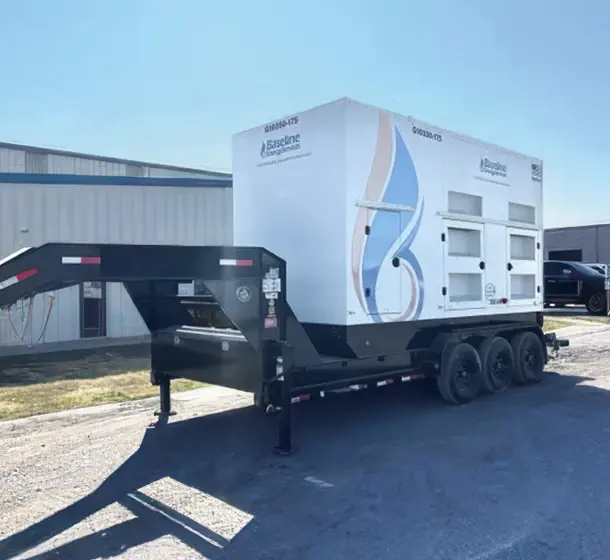Prime Power
Prime power generators serve as the primary source of power and are most suitable when power from the public utility is either unavailable, or due to cost or reliability issues, the consumer chooses not to buy from them. Prime power generators can be set up for short-term use but are designed to excel in long-term operation and are suitable for delivering reliable power in remote areas. Baseline’s Prime power generators operate on a variety of natural gas fuels including wellhead gas, making them a great fit for oil and gas operations in remote areas or those seeking to lower their electricity costs with a tailor-made, off-grid power solution.
Baseline’s Prime power generators are rated for operation at one hundred percent of their nameplate value under perfect conditions and with perfect quality fuel. Because perfect conditions rarely exist and wellhead gas of varying quality is often the primary fuel source, the typical electrical output is more realistically around eighty to ninety percent of the nameplate value. So, for a 350 kW generator, you can expect to get approximately 300 kW on wellhead gas.
Low loading (below 50%) can result in improper fuel burning and accumulation of unburnt fuel in exhaust systems, decreasing efficiency, and requiring more frequent maintenance. Low loading should be avoided even under variable load conditions. However, the flexible nature of Prime power generators enables them to bear a considerable amount of low loading as well as overloading for a limited span of time (around 1 hour in a 12-hour period). The overloading limit is usually 10% higher than the rated output power. This is especially useful when paralleling generators to meet the total power requirement as maintenance or swap-outs can be performed without impacting the customer.
